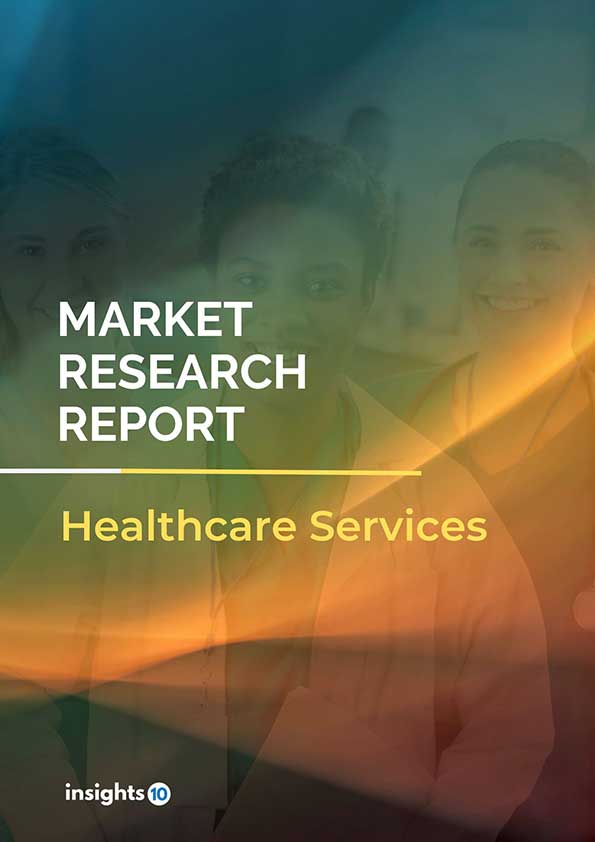India Liver Diseases Therapeutics Market Analysis
By 2030, it is anticipated that the India Liver Disease Therapeutics market will reach a value of $818 Mn from $420 Mn in 2022, growing at a CAGR of 8.7% during 2022-2030. Liver Disease Therapeutics in India is dominated by domestic pharmaceutical companies such as Dr. Reddy's Laboratories, Cadila Healthcare, and Sun Pharmaceutical. The Liver Disease Therapeutics market in India is segmented into different types of disease and different therapy types. Some of the significant factors affecting the India Liver Disease Therapeutics market are the growing prevalence of liver diseases and unhealthy and dynamic lifestyles.
Buy Now

India Liver Disease Therapeutics Analysis Summary
By 2030, it is anticipated that the India Liver Disease Therapeutics market will reach a value of $818 Mn from $420 Mn in 2022, growing at a CAGR of 8.7% during 2022-2030.
India is a lower middle-income, developing country located in Southern Asia bordering the Arabian Sea and the Bay of Bengal. In India, three different liver disease types (Fatty Liver Disease, Viral Hepatitis, and Liver Malignancy) account for about 600 Mn individuals. Aside from insurance coverage, the Indian government has launched a number of initiatives to improve access to liver therapies. The government, for example, has established the National Viral Hepatitis Control Program (NVHCP) to prevent, diagnose, and cure viral hepatitis.
In India, the epidemiology of the liver disease is changing. Improved screening procedures, more effective connection to care for early-stage liver disease and increased knowledge of preventative measures in a coordinated manner could all be beneficial interventions. According to the latest WHO data published in 2020 Liver Disease Deaths in India reached 268,580 or 3.17% of total deaths. The age-adjusted Death Rate is 22.24 per 100,000 of the population ranks India 83rd in the world. India's government spent 3 % of its GDP on healthcare in 2020.

Market Dynamics
Market Growth Drivers Analysis
In India, liver problems are quickly becoming recognised as public health issues. India bears a large burden of liver disease, accounting for 18.3 % of the two Mn global liver disease-related fatalities in 2015. 1 Cirrhosis and its consequences, generally known as chronic liver diseases (CLDs), have been steadily growing as causes of mortality in India since 1980. The South Asian Liver Institute, India's first private institute dedicated to patients with chronic liver disease (cirrhosis) and liver cancer, supports the Liver Foundation India. These aspects could boost India's Liver Disease Therapeutics market.
Market Restraints
In India, the expense of medical care, including liver disease treatment, can be prohibitively expensive, especially for those without medical insurance. This can create financial barriers to receiving necessary care. In recent years, India's healthcare infrastructure has improved, with increased access to medical care and breakthroughs in liver disease treatment. However, there are still gaps in access to care between urban and rural areas, and many patients face financial challenges. These factors may deter new entrants into the India Liver Disease Therapeutics market.
Competitive Landscape
Key Players
- Dr. Reddy's Laboratories: Dr. Reddy's Laboratories is a leading Indian pharmaceutical company that produces a range of therapeutics, including those for liver disease
- Lupin Limited: Lupin Limited is a multinational pharmaceutical company that develops and produces a wide range of therapeutic products, including those for liver disease
- Sun Pharmaceutical Industries: Sun Pharmaceutical Industries is a leading Indian pharmaceutical company that produces a variety of therapeutics, including those for liver disease. Its liver disease products include Ursodiol and Rifampicin
- Cipla Limited: Cipla Limited is a multinational pharmaceutical company that develops and produces a range of therapeutic products, including those for liver disease
- Cadila Healthcare Limited: Cadila Healthcare Limited is an Indian pharmaceutical company that produces a range of therapeutics, including those for liver disease
Recent Notable Updates
May 2022: In India, Abbott has introduced the HBsAg Next Qualitative Assay for early identification of the Hepatitis B virus (HBV). Early detection of HBV infections not only aids in the prevention or postponement of the evolution of advanced liver illnesses but also minimises the chance of transmission. With the use of the HBsAg Next Qualitative Solution, laboratories can now detect all HBV genotypes consistently and improve the identification and confirmation of mutants. HBV testing can be done for diagnostic purposes, as a screening test, or even after death to prevent HBV transmission to recipients of blood, blood components, cells, tissues, and organs.
Healthcare Policies and Reimbursement Scenarios
In India, the regulation and reimbursement of liver therapeutics are overseen by several government agencies, including the Central Drugs Standard Control Organization (CDSCO), the National Pharmaceutical Pricing Authority (NPPA), and the Insurance Regulatory and Development Authority (IRDAI). In terms of reimbursement, India has a mixed healthcare system with both public and private insurance options. The government's flagship healthcare program, Ayushman Bharat - Pradhan Mantri Jan Arogya Yojana (AB-PMJAY), provides health insurance coverage for up to 500 Mn people, including those living below the poverty line. Under the program, a wide range of medical procedures, including liver transplants, are covered.
1. Executive Summary
1.1 Disease Overview
1.2 Global Scenario
1.3 Country Overview
1.4 Healthcare Scenario in Country
1.5 Patient Journey
1.6 Health Insurance Coverage in Country
1.7 Active Pharmaceutical Ingredient (API)
1.8 Recent Developments in the Country
2. Market Size and Forecasting
2.1 Epidemiology of Disease
2.2 Market Size (With Excel & Methodology)
2.3 Market Segmentation (Check all Segments in Segmentation Section)
3. Market Dynamics
3.1 Market Drivers
3.2 Market Restraints
4. Competitive Landscape
4.1 Major Market Share
4.2 Key Company Profile (Check all Companies in the Summary Section)
4.2.1 Company
4.2.1.1 Overview
4.2.1.2 Product Applications and Services
4.2.1.3 Recent Developments
4.2.1.4 Partnerships Ecosystem
4.2.1.5 Financials (Based on Availability)
5. Reimbursement Scenario
5.1 Reimbursement Regulation
5.2 Reimbursement Process for Diagnosis
5.3 Reimbursement Process for Treatment
6. Methodology and Scope
Liver Disease Therapeutics Segmentation
By Treatment Type (Revenue, USD Billion):
- Chemotherapy
- Antiviral Drugs
- Vaccines
- Immunosuppressants
- Corticosteroids
- Immunoglobulins
- Targeted Therapy
By Disease Type (Revenue, USD Billion):
- Non-alcoholic Fatty Liver Disease (NAFLD)
- Autoimmune Diseases
- Cancer
- Hepatitis
- Genetic Disorder
- Others
By Distribution Channel (Revenue, USD Billion):
- Hospital Pharmacies
- Retail Pharmacies
- Online Pharmacies
Methodology for Database Creation
Our database offers a comprehensive list of healthcare centers, meticulously curated to provide detailed information on a wide range of specialties and services. It includes top-tier hospitals, clinics, and diagnostic facilities across 30 countries and 24 specialties, ensuring users can find the healthcare services they need.
Additionally, we provide a comprehensive list of Key Opinion Leaders (KOLs) based on your requirements. Our curated list captures various crucial aspects of the KOLs, offering more than just general information. Whether you're looking to boost brand awareness, drive engagement, or launch a new product, our extensive list of KOLs ensures you have the right experts by your side. Covering 30 countries and 36 specialties, our database guarantees access to the best KOLs in the healthcare industry, supporting strategic decisions and enhancing your initiatives.
How Do We Get It?
Our database is created and maintained through a combination of secondary and primary research methodologies.
1. Secondary Research
With many years of experience in the healthcare field, we have our own rich proprietary data from various past projects. This historical data serves as the foundation for our database. Our continuous process of gathering data involves:
- Analyzing historical proprietary data collected from multiple projects.
- Regularly updating our existing data sets with new findings and trends.
- Ensuring data consistency and accuracy through rigorous validation processes.
With extensive experience in the field, we have developed a proprietary GenAI-based technology that is uniquely tailored to our organization. This advanced technology enables us to scan a wide array of relevant information sources across the internet. Our data-gathering process includes:
- Searching through academic conferences, published research, citations, and social media platforms
- Collecting and compiling diverse data to build a comprehensive and detailed database
- Continuously updating our database with new information to ensure its relevance and accuracy
2. Primary Research
To complement and validate our secondary data, we engage in primary research through local tie-ups and partnerships. This process involves:
- Collaborating with local healthcare providers, hospitals, and clinics to gather real-time data.
- Conducting surveys, interviews, and field studies to collect fresh data directly from the source.
- Continuously refreshing our database to ensure that the information remains current and reliable.
- Validating secondary data through cross-referencing with primary data to ensure accuracy and relevance.
Combining Secondary and Primary Research
By integrating both secondary and primary research methodologies, we ensure that our database is comprehensive, accurate, and up-to-date. The combined process involves:
- Merging historical data from secondary research with real-time data from primary research.
- Conducting thorough data validation and cleansing to remove inconsistencies and errors.
- Organizing data into a structured format that is easily accessible and usable for various applications.
- Continuously monitoring and updating the database to reflect the latest developments and trends in the healthcare field.
Through this meticulous process, we create a final database tailored to each region and domain within the healthcare industry. This approach ensures that our clients receive reliable and relevant data, empowering them to make informed decisions and drive innovation in their respective fields.
To request a free sample copy of this report, please complete the form below.
We value your inquiry and offer free customization with every report to fulfil your exact research needs.








































